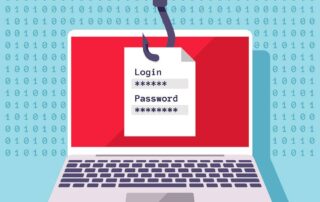The COVID-19 pandemic caused major disruptions within the American workforce that continue to be felt today. In 2022, companies were troubled by “The Great Resignation,” during which 50 million employees quit their jobs, often in search of new employment opportunities that would afford them greater work-life balance, increased compensation, and a favorable company culture. Because these factors can be difficult for companies to navigate, the future of HR analytics is looking bright because of the solutions that data-driven technologies and strategies present.

Beyond the complexities of compliance and other administrative responsibilities of HR staff, companies are faced with new challenges as employees have become more vocal about what they expect from their employers and what they will not tolerate. This means that to attract highly skilled and qualified employees, employers need to be extremely competitive. Whether this includes allowing employees to work with flexible schedules, offering competitive and innovative benefits, or providing opportunities for upskilling or reskilling, companies need to rethink their value to employees. Fortunately, HR analytics (also referred to as people analytics) is a valuable tool for HR departments to identify opportunities to become more attractive employers, thus improving recruitment and retention.
How Can Companies Overcome These Challenges?
Fortunately, as technology continues to advance, the future of HR analytics continues to evolve. More than ever, companies must have a keen understanding of their employees to successfully overcome hiring and retention obstacles. Data will play a central role in this transformation because it enables people analytics tools to identify patterns, trends, and habits from real-life employee data. When companies have an accurate picture of their employees and their preferences, they’re able to tailor policies that create a workplace that aligns with employee wants and needs.
Analyzing the Data
With the explosion of collaboration tools and technologies during the pandemic, you’re likely collecting massive amounts of data on your employees such as meeting types, workday segmentation, collaboration data, and more. In addition to demographics, payroll, and absenteeism data, these data points are a powerful tool. Technologies like artificial intelligence and machine learning can be applied to extract meaningful insights from these types of data and shed light on productivity, employee habits, and opportunities to enhance business processes.
These insights are essential because they allow companies to assess:
- Skills and Competencies: HR analytics can be used to identify when employees may need to be trained or retrained on certain skills. This maximizes productivity because employees aren’t wasting time on areas they have great competency and instead focused on where there is room for improvement.
- Employee Experience: Companies can assess employee feedback to identify where they could make the greatest strides in improving employee experience. In addition, companies can also seek to understand employee interests and ways to keep them engaged in their jobs.
- Decisions and Predictions: Data can be used to predict employee behavior, like quitting, so companies can intervene. At the same time, the future of HR analytics is likely to assist in hiring and firing decisions as well.
Even with its benefits, it can be a complex undertaking for companies with 75 to 6,000 employees to implement the technology needed to unlock HR analytics. Fortunately, outsourcing HF functions is a viable solution.
Working with an HRO like Corban OneSource will enable you to realize greater efficiencies, control costs, and keep employees engaged. We can manage the redundant and repetitive aspects of HR, including analytics, so your HR staff can focus on more strategic initiatives.
To learn more about Corban OneSource’s HR outsourcing for companies with 75 to 6,000 employees, contact our experienced team today.



